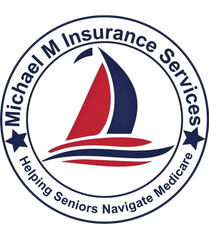What you really get (and what you risk) in 2026
When you enroll in Medicare, you automatically get Original Medicare (Parts A & B). Many people add a stand-alone Part D prescription plan for drug coverage. Some stop there, thinking: “Why pay extra for a Supplement or Advantage plan when I already have Medicare?”
It’s a fair question — but the difference between using just your Medicare card + a drug plan versus enrolling in a Medicare Advantage plan is huge. Let’s break it down.
With this setup, you have:
- Part A (Hospital) and Part B (Medical) from Medicare
- A stand-alone Part D plan for prescriptions
Option 1: Original Medicare + Part D (No Supplement)
What’s Covered
- Doctor visits, hospital stays, lab tests, preventive care, and prescriptions (via Part D)
What You Pay
- Part A deductible: $1,716 per benefit period in 2026 (up from $1,676 in 2025) MEDICARE COST SHARE 2026
- Part B premium: $206.50/month in 2026 (up from $185 in 2025) MEDICARE COST SHARE 2026
- Part B deductible: $288/year
- Coinsurance: 20% of the Medicare-approved amount for most services — with no cap on how much you could spend in a year
MEDICARE COST SHARE 2026 - All prescription drug costs under your chosen Part D plan until you hit the $2,100 out-of-pocket maximum
MEDICARE COST SHARE 2026
Pros
- Simplicity: No networks, no prior authorizations — any provider who takes Medicare is available.
- Nationwide access: Great for travelers or snowbirds.
- Flexibility: You can add a Medigap policy later if you qualify.
Cons
- Unlimited exposure: Multiple hospital stays or ongoing treatments could mean thousands in out-of-pocket costs.
- Prescription costs may be higher: Stand-alone Part D plans sometimes cover fewer drugs or have higher copays than Advantage plans.
- No extras: Dental, vision, and hearing are not included.
Best for: People in excellent health, with low prescription needs, who want the broadest choice of providers.
Option 2: Medicare Advantage (Part C)
A Medicare Advantage plan bundles your coverage:
- Part A + Part B + Part D in one plan
- Often includes extras like dental, vision, hearing, and fitness benefits
What’s Covered
- All Medicare-covered hospital and medical services
- Prescription drug coverage (most Advantage plans include Part D)
- Additional benefits like dental, vision, hearing, and sometimes even groceries or transportation
What You Pay
- Monthly premium: Often $0 or low-cost in many counties
- Copays: Set amounts for doctor visits, ER visits, hospital stays, etc.
- Maximum Out-of-Pocket (MOOP): $9,250 in 2026 (slightly lower than 2025) MEDICARE COST SHARE 2026
- Drug costs determined by the plan’s formulary and pharmacy network
Pros
- Out-of-pocket protection: Your costs are capped annually — something Original Medicare doesn’t provide.
- Lower premiums: In many areas, Advantage plans cost less per month than a stand-alone Part D plus uncovered 20% coinsurance under Original Medicare.
- Extras included: Dental, vision, and hearing can add real value.
Cons
- Networks: You may have to change doctors or stay within certain hospitals.
- Prior authorization: Common for tests, procedures, and some medications.
- Yearly changes: Plans can change benefits, networks, or drug coverage each year.
Best for: People who want budget predictability, drug coverage built in, and extra benefits
— and who don’t mind provider networks.
Key Takeaway
Using just your Medicare card + a Part D drug plan may look simple, but it leaves you open to unlimited costs if you get seriously ill. Medicare Advantage, on the other hand, bundles coverage and caps your spending — but requires you to stay in network and adapt to plan rules.
The right choice depends on your health, prescriptions, and comfort with networks. The smartest next step is to sit down with your broker — together you can compare real numbers for your doctors and medications and find the best fit for 2026.

